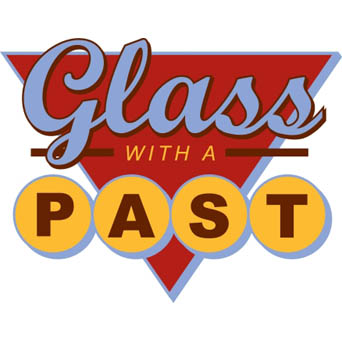 One of the really cool parts about this blog is I get asked a lot of really great questions, some of which I even know the answers to. Since the answers may help others as well, I’m posting them here. If you have a question, don’t be shy, send it on over! (I have left off the names of the question senders for privacy. If you sent a question and would like attribution and a back link, let me know!)
One of the really cool parts about this blog is I get asked a lot of really great questions, some of which I even know the answers to. Since the answers may help others as well, I’m posting them here. If you have a question, don’t be shy, send it on over! (I have left off the names of the question senders for privacy. If you sent a question and would like attribution and a back link, let me know!)
- Q: I was told by our local fused glass shop owner that recycled glass will crack on you down the road if you use it fused together (even if cut from the same sheet).
- A: I suspect your glass store owner actually does believe that recycled glass won’t work. I’ve run into that particular myth so many times. She was probably told that very thing by HER teachers at some point. What I find particularly amusing about it is the Architectural Glass manufacturing industry in the U.S. in 2012 was $2 billion dollars. The glass companies have the science worked out to an amazing degree. The newest advance that I’ve been following is development of Zero CoE glass. That will be a crazy cool thing if they ever get it worked out.
- Q: I’ve seen some references to shattered windshield glass but haven’t seen any information on whether and how it can be polished to get rid of any jagged edges. I’d like to use it in my art, maybe even jewelry, but it’d have to be user friendly, like no jaggies. Any info or suggestions would be appreciated.
- A: If you aren’t planning on fusing the glass bits, running them in a rock tumbler for a few minutes without grit will take off the sharp edges. I use a vibrating tumbler and do that with glass scrap that I’ll be using for projects with the very little kids (5 yr olds). Here’s a post detailing how: http://glasswithapast.com/cold-working-with-a-rock-polisher/ For your application, I would run the chunks dry and only for a few minutes, that will keep the flat edges shiny and dull the corners. Very importantly, make sure there is NO plastic or polymer in the windshield glass. Usually there is a thin polymer sheet between the layers to keep it from imploding, this will be toxic if burned in the kiln. Side windows that break into little bits should be fine.
- Q: Have been crushing blue bottles, tried making a pile on my kiln shelf on Thinfire paper. Went up to 1650 for an hour but the glass just tack fused and left a big pile, was hoping for a nice smooth puddle of glass. Thought about pot melting (haven’t tried that yet), maybe making the crushed glass smaller. I have looked on the internet for an hour but have found nothing about using recycled crushed glass.
- A: the amount of heat needed to full fuse chunks of glass is directly related to the size of the chunk. The smaller the particle, the higher the temperature. Anything smaller than a quarter and you’re looking at potmelts or really high temp fuses. If you want a translucent sheet, a pot melt is the way to go. You can fuse frit and get a smooth surface, but it is opaque and looks like stone (really cool effect, if that’s what you’re after).The other problem you may run into is Thinfire doesn’t really hold up well above 1650, so make sure your shelf is very well kiln washed.So, if it were my project, I would do a pot melt into a large terra cotta saucer that had been kilnwashed. Then the end glass will be perfectly round with smooth edges.
Things to remember about pot melts, use a pot with a hole at least 1/2″. You can easily make the hole larger with the rounded end of a ball peen hammer.
if your frit is really small, put a larger piece of blue glass over the hole to keep everything in the pot until it liquifies and drains out.
Cobalt blue is really dark, consider mixing the blue chunks with clear float glass chunks (clean broken tempered glass works great), or clear bottle frit.
Fire to 1850, hold for 15 minutes and then anneal as you would a fused piece.
Here are a couple of posts with photos of some pot melts, I hope that helps! Let me know if I’ve just created more questions.
http://glasswithapast.com/recycled-glass-pot-melt-tests/
http://glasswithapast.com/crucible-cast-take-2/
